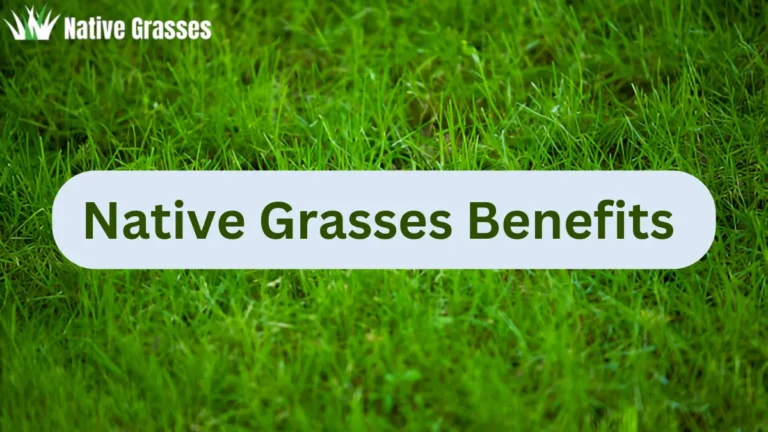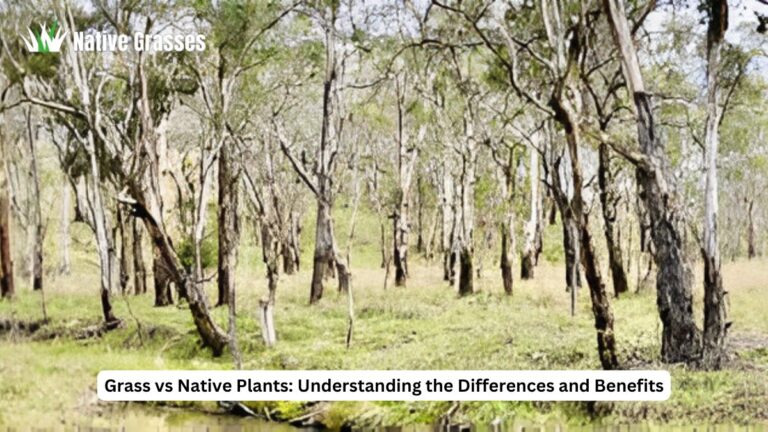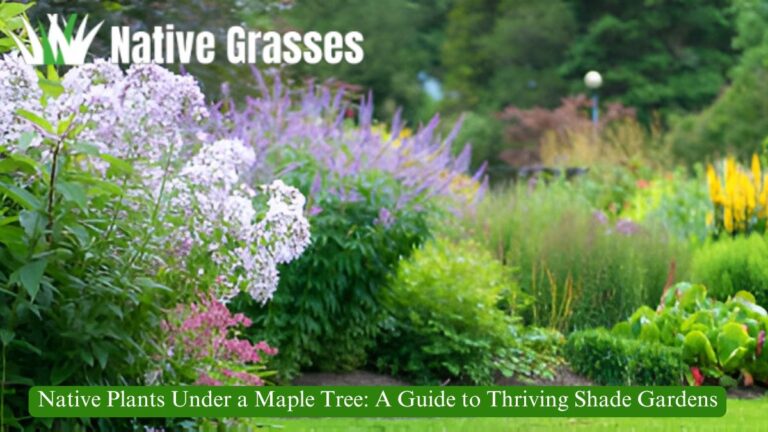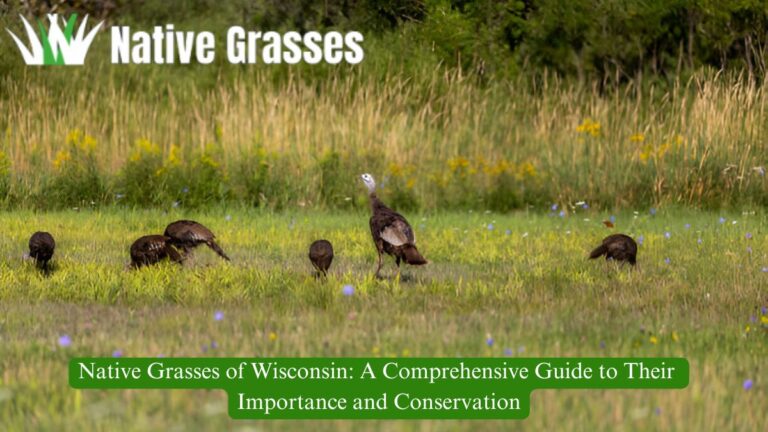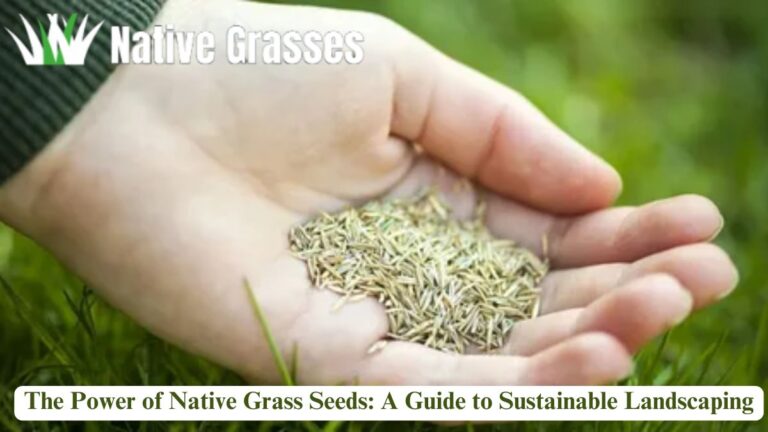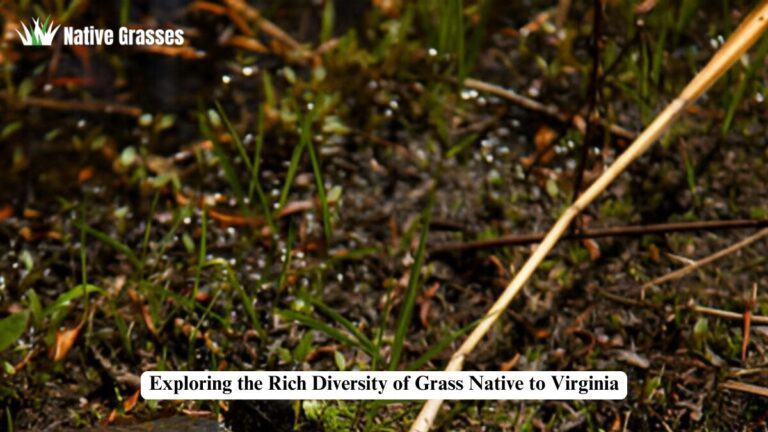Transform Your Yard with Native Grasses: A Complete Guide

Transform Your Yard with Native Grasses: A Complete Guide
Imagine stepping outside to a lush, vibrant yard that needs less water, fewer chemicals, and almost no mowing. Sounds like a dream, right? That dream can become a reality with native grasses. These eco-friendly plants bring life and sustainability to your outdoor spaces while supporting local ecosystems.
In this guide, we’ll explore everything you need to know about native grasses for your yard. From their benefits to practical tips on planting and maintenance, we’ve got you covered. Whether you’re a gardening novice or an expert landscaper, this comprehensive resource will help you create a yard that’s beautiful, practical, and environmentally conscious.
Understanding Native Grasses
What Are Native Grasses?
Native grasses are plant species that have naturally grown in a specific region for centuries. Unlike invasive species, they thrive in local conditions without disrupting ecosystems. Popular examples include:
- Little Bluestem (Schizachyrium scoparium): Known for its stunning reddish hues in the fall.
- Switchgrass (Panicum virgatum): A tall, versatile grass that works well in meadows.
- Blue Grama (Bouteloua gracilis): A compact grass perfect for low-maintenance yards.
These grasses adapt to the local soil, climate, and wildlife, making them an ideal choice for sustainable landscaping.
The Ecological Role of Native Grasses
Native grasses offer numerous ecological benefits, including:
- Erosion Control: Their deep root systems stabilize soil and prevent erosion.
- Pollinator Support: They provide food and shelter for bees, butterflies, and other essential pollinators.
- Water Conservation: Native grasses require less irrigation compared to non-native turf grasses.
Why Choose Native Grasses for Your Yard?
- Low Maintenance: Once established, native grasses require minimal care.
- Cost-Effective: Save money on water, fertilizers, and lawn services.
- Biodiversity Boost: Attract beneficial insects and wildlife to your yard.
Benefits of Native Grasses for Your Yard
Aesthetic Appeal
Native grasses aren’t just practical; they’re stunning. Their natural beauty can enhance any yard:
- Unique Textures: Fine, feathery blades or bold, upright stalks.
- Seasonal Interest: From green growth in spring to golden hues in fall.
- Diverse Landscaping Options: Use them as ground cover, in borders, or as focal points.
Cost and Maintenance Advantages
- Reduced Water Costs: Native grasses need less irrigation, cutting down your water bills.
- Fewer Lawn Care Expenses: Say goodbye to constant mowing and fertilizing.
- Longevity: Native grasses often outlive traditional turf grasses, adding long-term value.
Environmental Impact
Switching to native grasses makes your yard eco-friendly:
- Water Conservation: Helps combat drought conditions.
- Reduced Chemical Use: Eliminates the need for synthetic fertilizers and pesticides.
- Carbon Sequestration: Their deep roots capture and store carbon, helping fight climate change.
Selecting the Right Native Grasses
Factors to Consider
Choosing the right native grasses depends on:
- Climate: Match the grass to your region’s weather conditions.
- Soil Type: Test your soil’s pH and texture to find compatible species.
- Light Conditions: Identify areas with full sun, partial shade, or complete shade.
Popular Native Grasses by Region
| Region | Grass Varieties | Characteristics |
| Midwest | Little Bluestem, Big Bluestem | Tolerates drought and cold climates. |
| Southeast | Switchgrass, Indian Grass | Thrives in humid conditions. |
| Southwest | Blue Grama, Buffalograss | Drought-resistant and heat-tolerant. |
| Pacific Coast | California Fescue, Red Fescue | Performs well in cooler, coastal climates. |
Where to Source Native Grasses
- Local Nurseries: Often carry region-specific plants.
- Native Plant Societies: Provide resources and plant sales.
- Online Suppliers: Specialized retailers for seeds and plugs.
Preparing Your Yard for Native Grasses
Evaluating Your Yard
Before planting, analyze your yard:
- Soil Quality: Use a soil testing kit to determine pH and nutrient levels.
- Drainage: Check for water pooling or overly dry spots.
- Sunlight: Map areas with full sun, partial shade, and full shade.
Removing Non-Native Plants
Clearing out existing turfgrass and invasive species is crucial:
- Manual Removal: Dig out unwanted plants by hand.
- Smothering: Cover areas with tarps or cardboard to suppress growth.
- Avoid Chemicals: Opt for eco-friendly methods to protect soil health.
Soil Preparation
- Test and Amend: Adjust pH and add organic matter if needed.
- Loosen Soil: Till compacted areas for better root penetration.
- Add Mulch: Prevent weeds and retain moisture.
Planting Native Grasses
When to Plant
- Spring: Ideal for most grasses, giving them time to establish before winter.
- Fall: Cooler temperatures and consistent rainfall promote root growth.
Planting Techniques
- Direct Seeding: Scatter seeds evenly and lightly rake them into the soil.
- Using Plugs: Space out young plants for quicker establishment.
- Watering: Keep the soil moist until plants are well-established.
Companion Plants
Pair native grasses with:
- Wildflowers: Black-eyed Susans, coneflowers, and milkweed.
- Shrubs: Native species like viburnum or sumac.
- Ground Covers: Creeping thyme or mosses for shady areas.
Caring for Your Native Grass Yard
Watering Practices
- Establishment Phase: Water weekly for the first few months.
- Mature Plants: Reduce to occasional deep watering during dry spells.
Seasonal Maintenance
- Spring: Trim dead growth to encourage fresh shoots.
- Summer: Monitor for weeds and pests.
- Fall/Winter: Allow grasses to go dormant and provide wildlife shelter.
Troubleshooting Common Issues
- Weeds: Hand-pull or use natural weed suppressants.
- Pests: Attract natural predators like ladybugs or birds.
- Stress Signs: Wilting or yellowing may indicate overwatering or poor soil.
Enhancing the Habitat
Attracting Pollinators
- Plant flowering grasses like prairie dropseed.
- Avoid pesticides that harm pollinators.
- Provide water sources for bees and butterflies.
Supporting Wildlife
- Birds: Native grasses offer seeds and nesting materials.
- Small Mammals: Create hiding spots for rabbits and chipmunks.
- Beneficial Insects: Encourage spiders and beetles for natural pest control.
Sustainable Practices
- Mulching: Retains moisture and reduces weeds.
- Composting: Recycle yard waste to nourish soil.
- Avoid Chemicals: Use organic fertilizers and pest deterrents.
Success Stories
Real-Life Examples
- Case Study 1: A suburban homeowner in Texas transformed a water-guzzling lawn into a drought-resistant haven using blue grama and buffalo grass.
- Case Study 2: An Illinois resident replaced invasive species with switchgrass and wildflowers, reducing their water usage by 50%.
Lessons Learned
- Start small and expand as you gain confidence.
- Patience is key; native grasses may take time to establish but offer lasting rewards.
Conclusion
Switching to native grasses transforms your yard into a sustainable, low-maintenance, and visually stunning space. By following the steps outlined in this guide, you can enjoy a beautiful yard that benefits the environment and supports local wildlife.
Frequently Asked Questions
What are native grasses?
Native grasses are plants that naturally occur in specific regions, requiring less maintenance and resources.
How do I maintain a native grass yard?
Regularly water during establishment, trim dead growth seasonally and monitor for weeds.
Are native grasses expensive?
Initial costs may be higher, but long-term maintenance savings make them cost-effective.
Can I plant native grasses in shaded areas?
Yes, species like red fescue thrive in shade.
Do native grasses attract pests?
They attract beneficial insects that help control pests naturally.
Where can I buy native grasses?
Local nurseries, online suppliers, and native plant societies are excellent sources.
Do native grasses grow quickly?
Growth rates vary; some are established within months, while others take longer.
Are native grasses good for erosion control?
Yes, their deep roots stabilize soil and prevent erosion.
What’s the best time to plant native grasses?
Spring and fall are ideal for planting.
Can I replace my entire lawn with native grasse?
Absolutely! Many homeowners successfully transition to 100% native grass yards.

